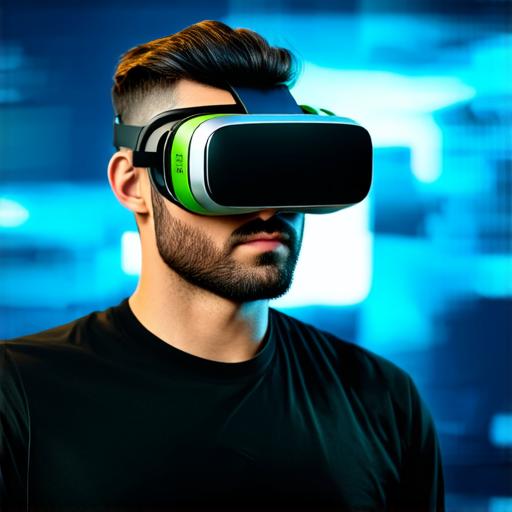
How do virtual reality headsets work?
Virtual reality (VR) is an immersive technology that enables users to experience and interact with simulated environments. VR headsets are one of the most important components in VR systems, as they provide the visual feedback that allows users to see and navigate their virtual worlds.
Key Components of VR Headsets
VR headsets are made up of several key components that work together to create a seamless and immersive experience for the user. These include:
- Display screens
The display screens in VR headsets are responsible for showing the virtual environment to the user. Typically, these screens use liquid crystal displays (LCDs) or OLEDs to produce high-resolution images with a wide field of view. Some VR headsets also use microdisplay technology, which projects images onto a transparent screen that is worn in front of the eyes.2. Head tracking sensors
VR headsets use various types of sensors to track the user’s movement and orientation in real-time. These sensors can include accelerometers, gyroscopes, magnetometers, depth sensors, and time-of-flight (ToF) cameras. By combining data from these sensors, VR systems can accurately calculate the user’s position and adjust the virtual environment accordingly.

- Optical lenses
The optical lenses in VR headsets are designed to provide a clear and focused image for each eye. These lenses typically use foveated rendering techniques, which involve rendering high-quality graphics only in the area where the user’s eyes are focused, and then gradually reducing the resolution of the surrounding areas. This helps to reduce the processing power required by the VR system, and can also help to minimize motion sickness.4. Controllers
VR headsets often come with handheld controllers that allow users to interact with virtual objects and environments. These controllers typically include buttons, joysticks, triggers, and sensors that can track the user’s hand movements and gestures. Some VR systems also support gesture recognition technology, which allows users to control virtual objects using natural hand movements.
Tracking Systems in VR Headsets
VR headsets use a variety of tracking systems to accurately monitor the user’s movement and orientation. These systems can be divided into two main categories: external and internal tracking.
External tracking
External tracking systems rely on external sensors, such as cameras or infrared emitters, to track the user’s movement. These systems are often used in set-up environments where the user has a fixed position, such as a VR arcade or studio. External tracking systems typically use optical or ultrasonic technology to measure the distance between the user and the sensors, and can provide highly accurate tracking data.Internal tracking
Internal tracking systems rely on sensors that are built into the VR headset itself, such as accelerometers, gyroscopes, and magnetometers. These systems are often used in mobile or untethered VR applications, where external sensors may not be available. While internal tracking systems are less accurate than external systems, they can provide real-time tracking data that is useful for applications such as gaming or training simulations.Display Technologies Used in VR Headsets
VR headsets use a variety of display technologies to produce high-quality images for the user. These include:
- Liquid crystal displays (LCDs)
LCD displays are the most common type of display used in VR headsets. They offer high resolution, wide viewing angles, and good color accuracy. However, they can be prone to glare and reflections, which can make it difficult for users to see the virtual environment clearly.2. OLED displays
OLED displays are an increasingly popular choice for VR headsets due to their high contrast ratio, wide viewing angles, and low power consumption. They also offer good color accuracy and can produce highly immersive visual effects, such as depth of field and color gradients.
3. Microdisplay technology
Microdisplay technology involves projecting images onto a transparent screen that is worn in front of the eyes. This allows users to see the virtual environment directly without the need for head-mounted displays.


